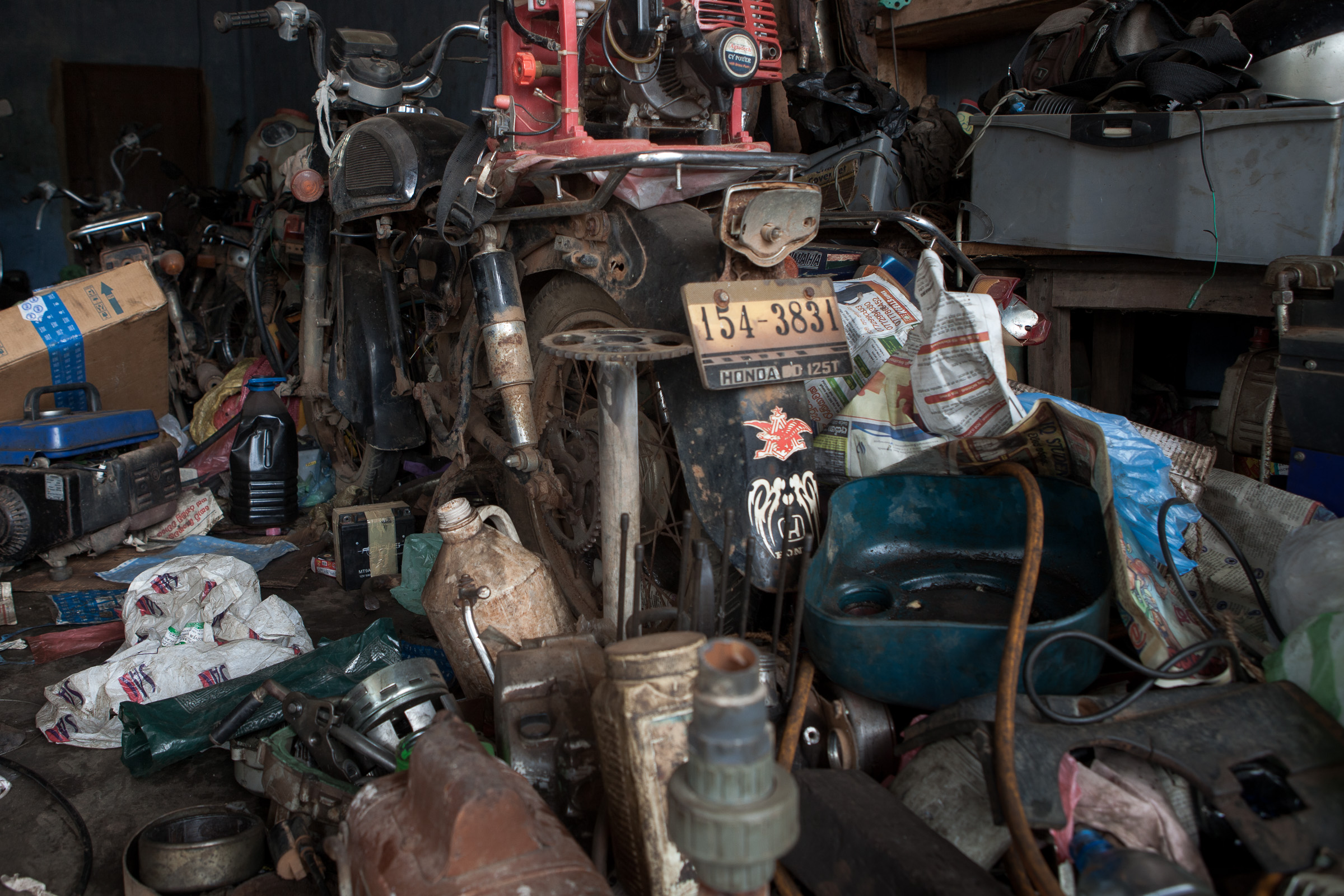Sri Lanka by Motorcycle

Two wheels will let you thread your way though carts and cattle and bus breakdowns. You can stop and park whenever and where ever you like. We stopped to catch cricket games being played and pulled in to dozens of little roadside stalls selling beef rotis and cold water. A bike will let you get out into some areas that would be pretty much inaccessible by car. On the way south of Trincomalee we took our bikes off-road through forests and around lakes and rice paddies near Minneriya. Big fences marked the edge of elephant country and at times it was hard to tell if we were on a track or in a creek bed. We’d drop down into a little depression every now and then and scatter a thousand butterflies resting in the shade. It was magic.
But the best thing about moto-touring Sri Lanka is that it virtually guarantees a lot of quality time spent with friendly amateur and professional mechanics. If the national pastime is cricket, motorcycle maintenance is a close second. Every day one of us broke down at least once and, without fail, there was someone nearby to lend a hand. On day two, just outside Wilpattu National Park, Ryan’s ignition switch stopped working. The local mechanic put us at the front of the queue and found a replacement switch among a pile of disassembled motor-scooters. Whether we were stalled at a petrol station or halfway up a mountain someone would wander by and troubleshoot the problem, find the part, tell us where to buy the part or jerry-rig it on the spot. I don’t remember spending more than an hour before we were moving again.
The Royal Enfield 350 that I rented has been in production in India for more than 50 years so I was expecting to see a few on the road. As it turned out most of Sri Lanka’s imports come from China and Japan so my bike was a novelty for everyone that had to puzzle over its workings. On a wild road on the way to Meerume I blew a fuse. A group of uni students from Colombo got it started again but, on the way back into town, the clutch cable snapped. Matt and I roll-started the bike and I worked on my clutchless shifting while descending back into the valley- all the while hoping we’d find a mechanic before we had to start going uphill again.
In Kandy we looked for replacement side mirrors after a spill a few days earlier. We found a shop specialising entirely in automotive mirrors and had one made up on the spot. Second on our list was a replacement brake lever. We hadn’t come across anything that looked like an actual parts supplier and the roadside repair shops rarely keep any spare parts on hand. After a few discouraging head shakes from mechanics on the outskirts of town we were eventually pointed to a motorcross import shop run by a trendy looking young guy with long hair and tattoos. He had a lever but it didn’t fit so he jumped on his bike, sped out into traffic, and took it to a local machine shop to have it ground down to the right size.
After a couple of weeks riding around the island I have come up with a few helpful guiding principles of Sri Lankan moto-touring:
- Intent matters: Learn to recognise the subtle differences between bus drivers that want to kill you and those that simply don’t care if you die.
- Possession is nine tenths of the law: Impatient tuk-tuk drivers will try to force you off the road or into oncoming traffic. Hold your ground.
- Fortune favours the bold: Cross-traffic will never stop. Just pull out and make your turn. Your fellow road users will make room.
In his book Zen and the Art of Motorcycle Maintenance Robert Prisig suggests that there are two essential outlooks; the romantic view which values instinct and intuition, and the classical outlook which favours rational analysis and consideration. I’d always thought of myself as leaning towards the latter but each time the bike broke down or failed to start I found myself guessing at the problem or hoping that just the right combination of choke, throttle and clutch would get it going again. The Lankans, on the other hand, all had the same methodical approach- check the fuel, check the power, check the plugs, check the connections- eliminate those possibilities and then work outwards until you find the fault. Although the form of Buddhism mentioned in Robert Prisig’s philosophy novel isn’t the one practised on the island his book does offer some guidance as to how to deal with the mental side of mechanical failures and temperamental bikes. The trick is to remember that you get to decide how annoyed you are in any given circumstance.
“The test of the machine is the satisfaction it gives you. There isn’t any other test. If the machine produces tranquility it’s right. If it disturbs you it’s wrong until either the machine or your mind is changed.”
















Leave a Reply